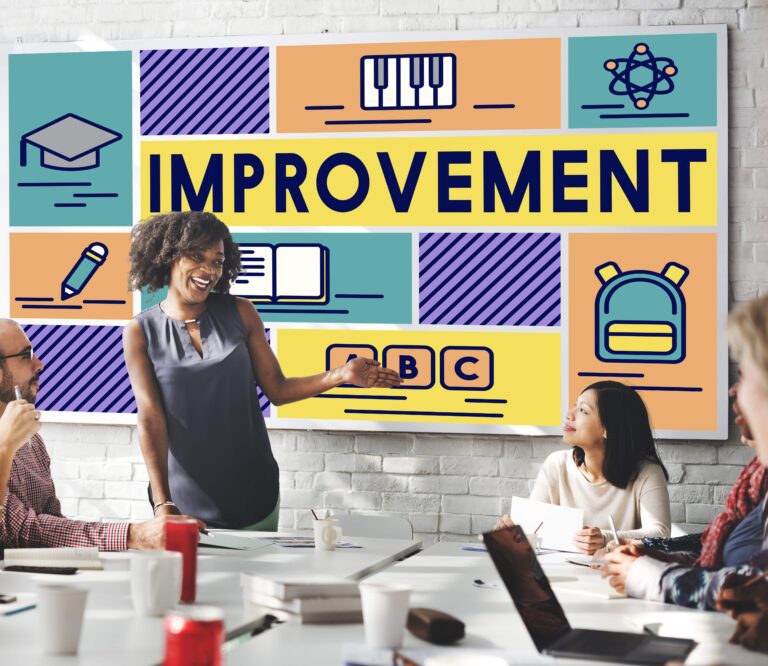Taking Time to Assess Instructional Impact

Educators must always balance urgent needs in classrooms with the longer-term goal of improving student outcomes. As part of a regular series on the state of education in the U.S., we asked four passionate leaders in K–12 education to join us for a conversation about literacy and math instruction and student achievement:
- Dr. Emily Hare, Director of PreK–12 Mathematics for Guilford County Schools
- Dr. Amanda Malone, K–12 Literacy Director for the Mississippi Department of Education
- Dr. Melissa Sadorf, Executive Director of the National Rural Education Association and professor at Northern Arizona University
- Dr. Rufus Hill, State Director of K–12 Mathematics Coaching for the Mississippi Department of Education
Host Dr. Karen Beerer, Senior Vice President of State and Strategic Partnerships at Discovery Education, opened the discussion by outlining what educators are observing and the pressures they’re experiencing in schools and districts of all kinds:
- The declines evident in the 2024 NAEP reading and math scores
- Legislation in many states that requires evidence-based instruction in curricula and sets aside funding for curriculum, tutoring, and acceleration efforts.
- Technology fatigue for educators driving demand for simpler, integrated solutions
- Teacher shortages and the effects on educators, schools, and districts
But these challenges also create opportunities for using personalization and data-driven strategies to close gaps, making conversations like this one essential for driving progress in literacy and math.
What’s Currently Working?
Dr. Beerer said, “I thought we’d start with Mississippi, because when you read about the amazing growth that Mississippi students have achieved over the past decade, they often call it the ‘Mississippi Miracle.’ [But] it really wasn’t a miracle. It was planned, strategic systems of change.” Dr. Amanda Malone explained that everything began with legislation focused on K–3. Now schools throughout the state have literacy coaches who focus on “the whole child and the whole teacher.” In addition, they’ve found having access to high-quality instructional materials (HQIM) is key.
For rural communities, relationships remain the foundation. Dr. Melissa Sadorf shared, “Teachers know their students and their families on a very personal level, and that allows those instructors to be highly responsive to student needs, even when formal resources are scarce.” By necessity, teachers wear multiple hats and can use technology to be a bridge that levels the playing field for students.
At the district level, Dr. Emily Hare explained that they are “intentional about aligning their work to a shared vision and value about what math instruction is and the experience each student should have” in her district. This shared vision guides curriculum development, HQIM choices, and professional learning, resulting in consistency across classrooms.
What Needs More Attention?
“Too many students are leaving high school without the skills they need to succeed, especially in rural and high-poverty schools,” remarked Dr. Sadorf. Teacher shortages are making sustained improvement difficult, and a reliance on short-term grants and pilot programs means gains are hard to hold onto.
Dr. Hare agreed, adding: “We’ve articulated clear commitments at the state and district level, but how do we ensure that our supports and resources are consistent across all of those schools? It’s really not a question of effort—I think we all know that—but of sustaining and scaling that vision so that it lives in daily practice.”
In Mississippi, coaches are actively building teacher capacity around HQIM, but sometimes teachers are trained and then leave. Dr. Malone emphasized that using resources most effectively will help, especially when technology is involved.
Dr. Rufus Hill pointed out that using resources with fidelity is important for success, especially since the teacher shortage means not everyone has the specific background in what they’re teaching. He mentioned one math teacher with an ELA background who has “been able to kind of teach herself to teach the students” using HQIM.
Strategies and Real-World Examples of Change
The panelists shared programs, approaches, and partnerships that are driving real gains in literacy and numeracy.
Dr. Malone identified:
- Using and training educators on structured literacy, which is based on the Science of Reading
- Helping students learn to read in the most efficient way
- Continually evolving and learning as educators
Dr. Hill noted:
- Implementing the Mathematics Instruction Observational Protocol (MIOP)
- Creating a coaching academy with instructional leaders and coaches
- Starting a partnership with the Dana Center at the University of Texas
Dr. Hare emphasized:
- Implementing HQIM with integrity for children that are traditionally underserved
- Supporting collaborative math leadership teams at school and district levels
- Seeking input from cross-collaborative district teams multiple times per year
Dr. Sadorf then concluded that collaboration is a multiplier: partnering increases impact, closes gaps, and “ensures educator voices shape solutions that benefit everyone.”
Supplemental Resources
Regarding HQIM and supplemental resources, Dr. Beerer asked how educators assess them and then implement them in the classroom. Dr. Malone noted that while each district chooses its own resources, state department level administrators can “see commonalities and provide coaching around those.” She recommended using supplemental resources to elevate math and literacy instruction.
Innovation in Math and Literacy
The panelists each offered a single word or phrase to capture what innovation in math and literacy means to them.
- Dr. Sadorf chose the word connected, saying, “Innovation in literacy math has to connect students to engaging, relevant learning.”
- Dr. Hare chose alignment, explaining, “It’s about aligning to our vision, our values.”
- Dr. Hill came up with purposeful, noting, “I just think that with every decision that we make, we need to make sure that we have a purpose for that.”
- Dr. Malone’s phrase was “Effectively partnering what we know with what we have, with a learner in mind.”
Engagement’s Role in Learning
In closing, Dr. Beerer brought up the “big topic” of engagement, something that always seems to come up in discussions about ways to improve learning. She noted that the 2025–2026 Education Insights Report, with a focus on engagement, offers key insights about education, motivation, and challenges in today’s classrooms. The report is free to download.
There’s so much more to learn from the full discussion!
Host and Experts’ Backgrounds
Dr. Karen Beerer, Senior Vice President of State and Strategic Partnerships at Discovery Education.
Dr. Emily Hare, Director of PreK–12 Mathematics for Guilford County Schools. With a Ph.D. in Teacher Education, she is dedicated to building strong systems that empower teachers and students to succeed in math.
Dr. Amanda Malone, K–12 Literacy Director for the Mississippi Department of Education. With over 20 years of experience as a teacher, coach, and coordinator, she brings deep expertise in literacy leadership. She earned her Ph.D. in Higher Education Administration.
Dr. Melissa Sadorf, Executive Director of the National Rural Education Association and professor at Northern Arizona University. She has over 30 years of experience in education as a teacher, principal, and superintendent.
Dr. Rufus Hill, State Director of K–12 Mathematics Coaching for the Mississippi Department of Education. He earned degrees from Alabama A&M, Delta State University, and completed his doctorate at National University.






